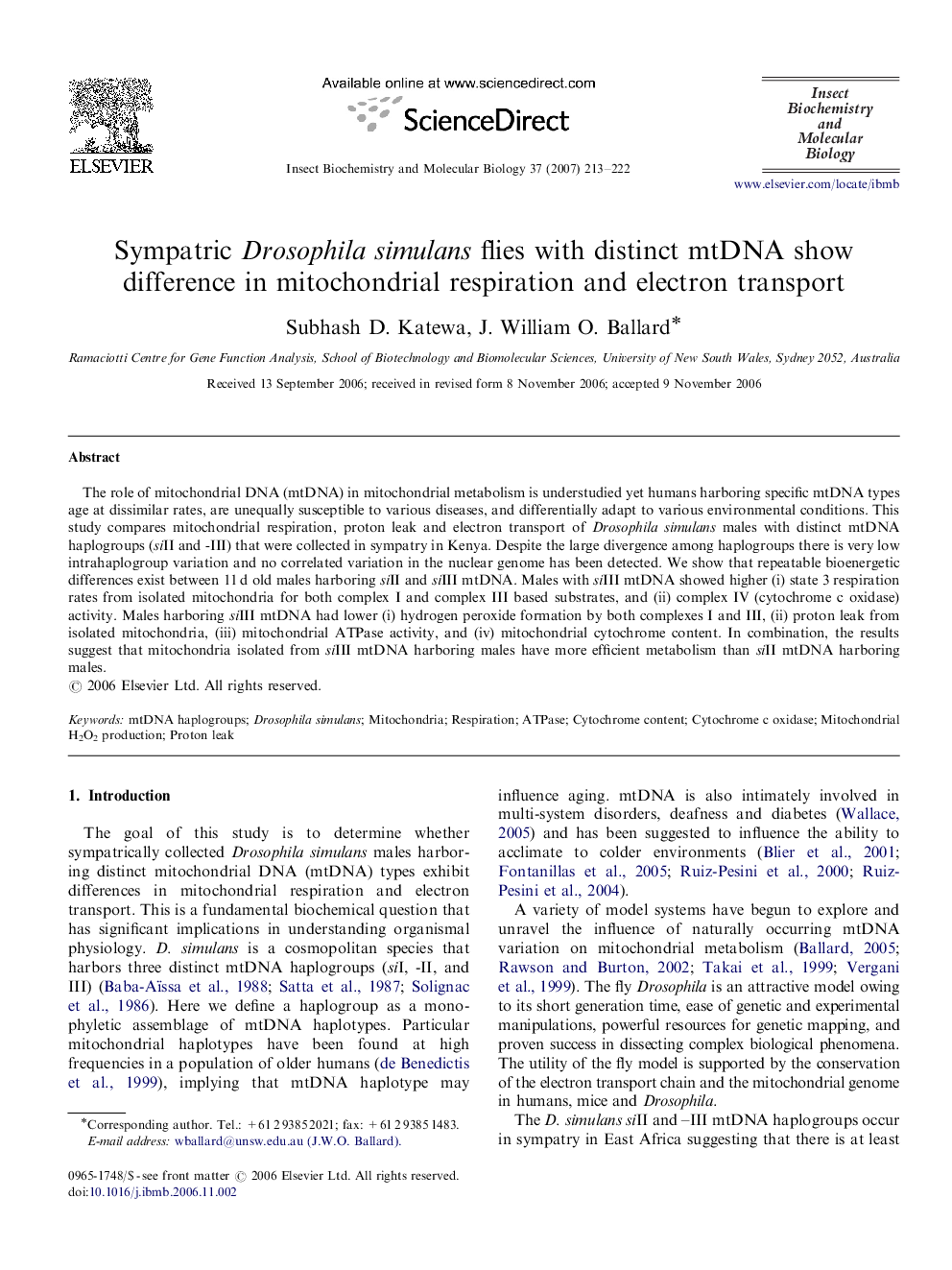| Article ID | Journal | Published Year | Pages | File Type |
|---|---|---|---|---|
| 1983101 | Insect Biochemistry and Molecular Biology | 2007 | 10 Pages |
The role of mitochondrial DNA (mtDNA) in mitochondrial metabolism is understudied yet humans harboring specific mtDNA types age at dissimilar rates, are unequally susceptible to various diseases, and differentially adapt to various environmental conditions. This study compares mitochondrial respiration, proton leak and electron transport of Drosophila simulans males with distinct mtDNA haplogroups (siII and -III) that were collected in sympatry in Kenya. Despite the large divergence among haplogroups there is very low intrahaplogroup variation and no correlated variation in the nuclear genome has been detected. We show that repeatable bioenergetic differences exist between 11 d old males harboring siII and siIII mtDNA. Males with siIII mtDNA showed higher (i) state 3 respiration rates from isolated mitochondria for both complex I and complex III based substrates, and (ii) complex IV (cytochrome c oxidase) activity. Males harboring siIII mtDNA had lower (i) hydrogen peroxide formation by both complexes I and III, (ii) proton leak from isolated mitochondria, (iii) mitochondrial ATPase activity, and (iv) mitochondrial cytochrome content. In combination, the results suggest that mitochondria isolated from siIII mtDNA harboring males have more efficient metabolism than siII mtDNA harboring males.
